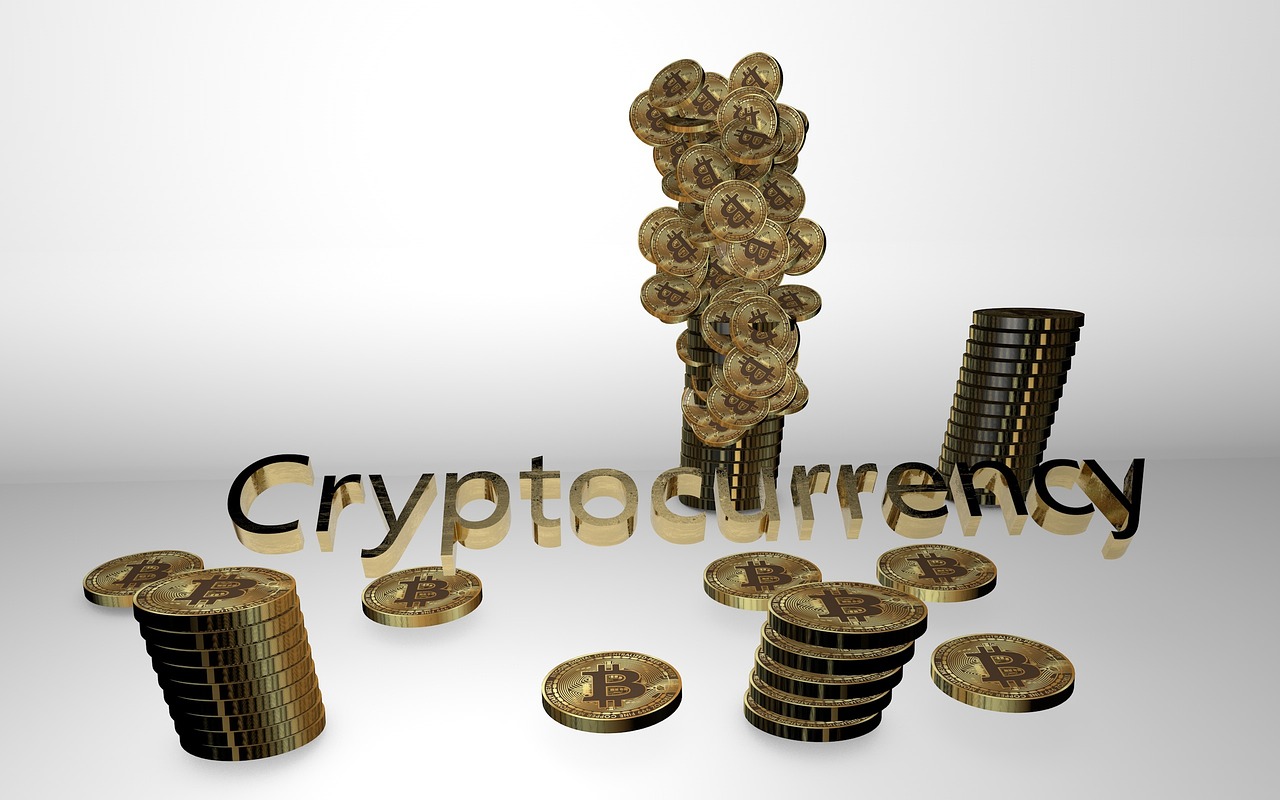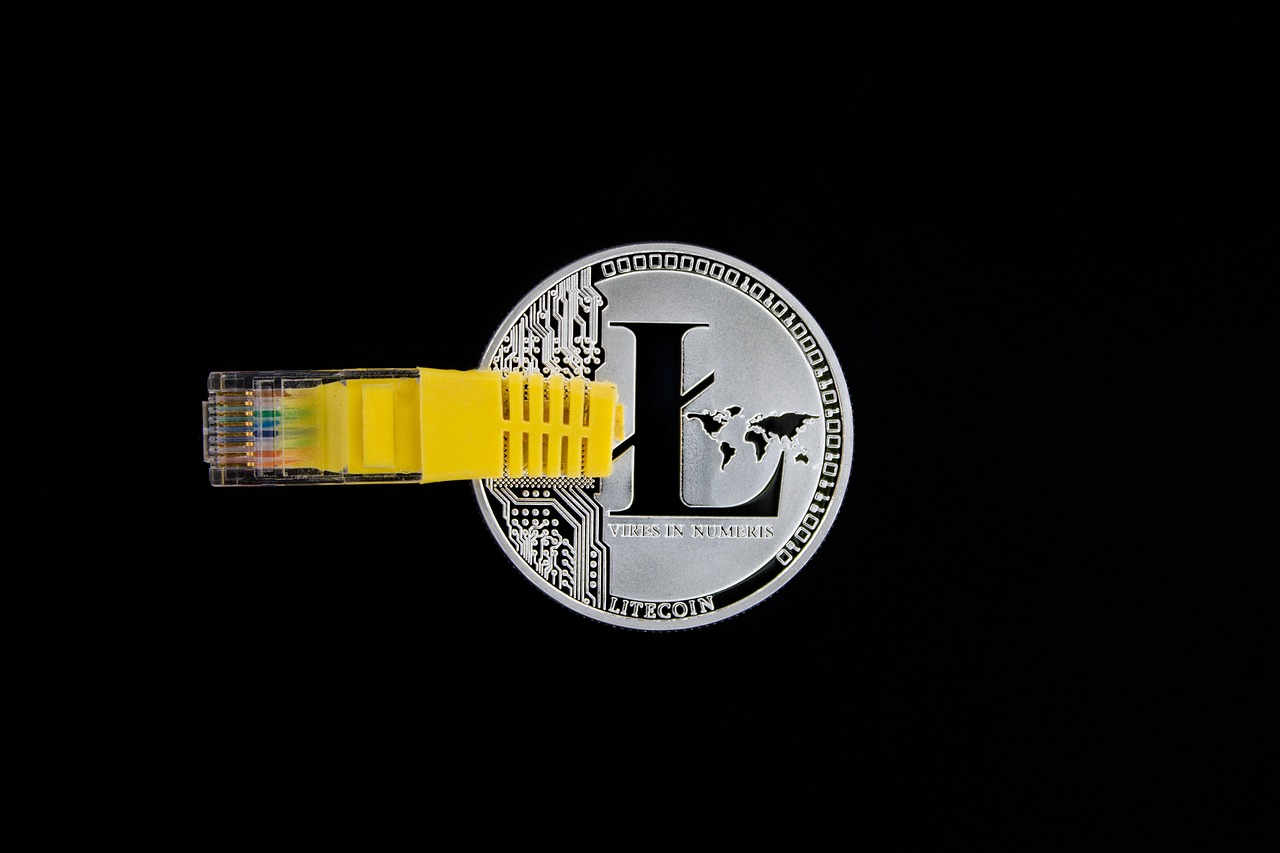Holo - Hosting Decentralized Applications
In the rapidly evolving world of technology, the demand for decentralized applications (dApps) is skyrocketing. As more developers and users seek alternatives to traditional centralized platforms, Holo emerges as a beacon of innovation. This article dives deep into Holo, a platform specifically designed for hosting dApps, and explores its architecture, benefits, challenges, and the promising future it holds within the blockchain ecosystem.
Imagine a world where applications are not just hosted on a single server, but are spread across a vast network of users, each contributing to the application's functionality. This is the essence of Holo, which operates on the revolutionary Holochain technology. Unlike traditional blockchain systems that rely on a single chain of blocks, Holochain embraces an agent-centric architecture. This means that every user, or agent, has their own unique chain, allowing for greater flexibility and efficiency. It’s like having a personal library where you can store your favorite books, rather than being limited to a single, overcrowded library.
So, what does this mean for developers and users alike? The advantages of hosting on Holo are numerous. First and foremost, the platform offers exceptional scalability. Traditional dApps often struggle with performance as user numbers grow, but Holo's innovative architecture allows applications to scale effortlessly. Imagine a balloon that expands without ever popping; that's how Holo manages to maintain performance while accommodating more users.
Furthermore, Holo significantly reduces hosting costs. By leveraging a peer-to-peer network, developers can minimize overhead expenses, making it a financially attractive option. It's akin to sharing a ride with friends instead of paying for a taxi alone; everyone benefits from the reduced cost, while still reaching the destination.
But the benefits don’t stop there. Holo's performance is enhanced by its efficient resource management. Developers can optimize their applications to run smoothly without draining resources, ensuring a seamless experience for end-users. This is particularly important in today's fast-paced digital environment, where users expect instant gratification.
In addition to scalability and cost-effectiveness, security is a top priority in the realm of decentralized applications. Holo addresses this concern with robust security mechanisms that ensure data integrity and user privacy. By utilizing advanced cryptographic techniques, Holo creates a safe environment for dApps, allowing users to interact confidently without the fear of data breaches or unauthorized access.
However, despite its many advantages, Holo is not without its challenges. One of the most significant hurdles it faces is user adoption. For Holo to thrive, both developers and users need to be aware of its capabilities and benefits. This requires a concerted effort in education and outreach to bridge the knowledge gap and encourage more individuals to explore the platform.
Additionally, Holo must navigate the competitive landscape of decentralized hosting solutions. With numerous platforms vying for attention, standing out becomes crucial. Holo's unique features and benefits will need to be effectively communicated to attract a loyal user base.
Moreover, like any technology, Holo faces technical limitations. While its architecture is innovative, there are still constraints that could impact the performance and scalability of hosted applications. Understanding these limitations is essential for developers to maximize the potential of their dApps on the Holo platform.
In summary, Holo represents a groundbreaking approach to hosting decentralized applications. By leveraging the unique features of Holochain, it offers a scalable, cost-effective, and secure environment for developers and users alike. As the demand for dApps continues to grow, Holo's potential in the blockchain ecosystem is immense. However, overcoming adoption barriers and addressing technical challenges will be essential for its long-term success.
- What is Holo? Holo is a platform designed for hosting decentralized applications, utilizing Holochain technology.
- How does Holo differ from traditional blockchain? Holo employs an agent-centric architecture, allowing each user to maintain their own unique chain of data.
- What are the benefits of using Holo? Benefits include enhanced scalability, reduced hosting costs, and strong security features for dApps.
- What challenges does Holo face? Holo faces challenges such as user adoption, competition from other platforms, and technical limitations.

Understanding Holochain
Holochain is the revolutionary technology that powers Holo, and it’s essential to grasp its core principles to understand why it stands out in the crowded blockchain space. Unlike traditional blockchain systems, which rely on a centralized ledger to validate transactions, Holochain operates on an agent-centric architecture. This means that each user, or agent, maintains their own individual chain, allowing for a more flexible and scalable approach to application development.
Imagine a bustling city where each resident has their own unique home. In this analogy, the homes represent individual chains, while the city itself symbolizes the shared ecosystem of Holochain. Each resident can build and modify their home without needing permission from a central authority, fostering creativity and innovation. This setup contrasts sharply with traditional blockchains, where all transactions must be recorded on a single, immutable ledger, often leading to bottlenecks and inefficiencies.
One of the standout features of Holochain is its ability to enable peer-to-peer interactions without the need for a centralized server. This decentralization not only enhances security but also empowers users by giving them control over their data. In Holochain, data integrity is maintained through cryptographic hashes, ensuring that information remains secure and tamper-proof. Users can interact directly with one another, sharing data and resources seamlessly, much like neighbors exchanging goods in a tight-knit community.
Furthermore, Holochain supports the development of decentralized applications (dApps) that can operate independently of the internet, making it a game-changer for developers. This capability opens up a world of possibilities, allowing for applications that can function in offline environments or in areas with limited connectivity. With Holochain, the potential for innovation is virtually limitless.
To summarize, Holochain's agent-centric architecture, peer-to-peer networking, and ability to function independently of the internet make it a powerful platform for hosting decentralized applications. As we continue to explore Holo and its offerings, it's crucial to understand how these unique features contribute to its overall effectiveness and appeal in the blockchain ecosystem.

Benefits of Holo Hosting
When it comes to hosting decentralized applications (dApps), Holo stands out as a game-changer. Imagine the freedom of not being tethered to traditional cloud services, where control and costs can spiral out of reach. Holo offers a unique approach that not only empowers developers but also provides a seamless experience for users. With its innovative architecture, Holo brings a plethora of benefits that make it an attractive option for anyone looking to dive into the world of decentralized applications.
One of the most significant advantages of Holo hosting is its scalability. In the world of technology, scalability is akin to having a rubber band that can stretch infinitely without breaking. Holochain, the underlying technology of Holo, allows applications to expand and contract based on user demand. This means that as more users join a dApp, the system can accommodate them without a hitch. Unlike traditional blockchains that can become congested and slow, Holo’s architecture ensures that performance remains smooth and efficient, even during peak times.
Another key benefit is the reduced costs associated with hosting on Holo. Traditional hosting solutions can come with hefty fees, especially when traffic spikes or additional resources are needed. Holo flips this model on its head. By utilizing a peer-to-peer network, the costs are distributed among users, significantly lowering the financial burden on developers. This means that developers can invest more in enhancing their applications rather than worrying about exorbitant hosting fees.
Moreover, the enhanced performance offered by Holo is a breath of fresh air for developers and users alike. With traditional systems, latency can be a major issue, leading to frustrating delays. Holo’s decentralized nature allows for faster data retrieval and processing, which translates to a better user experience. Imagine streaming your favorite show without buffering or waiting for pages to load – that’s the kind of performance Holo aims to deliver.
To illustrate the benefits of Holo hosting, let’s take a look at a comparison table that highlights how Holo stacks up against traditional hosting solutions:
| Feature | Holo Hosting | Traditional Hosting |
|---|---|---|
| Scalability | Dynamic, adapts to user demand | Static, can become congested |
| Cost | Lower, shared among users | Higher, fixed fees |
| Performance | Fast, low latency | Variable, can be slow |
| Data Ownership | Decentralized, user-controlled | Centralized, provider-controlled |
In addition to these advantages, Holo's peer-to-peer networking fosters a collaborative environment among users. Each participant in the network contributes resources, which enhances the overall efficiency of the system. This collaboration not only improves scalability but also creates a sense of community among developers and users. Think of it as a potluck dinner where everyone brings a dish to share; the more participants, the richer the experience.
Lastly, Holo’s resource efficiency cannot be overlooked. Developers can optimize their applications to run on minimal resources, which is crucial for maintaining performance without incurring high costs. This efficiency means that even small-scale developers can launch robust applications without needing a massive budget. It’s like being able to cook a gourmet meal on a budget – it’s all about making the most of what you have!
In summary, Holo hosting offers a myriad of benefits that can revolutionize how we think about decentralized applications. From scalability and cost-effectiveness to enhanced performance and community-driven networking, Holo is paving the way for a new era of dApp hosting that is not only efficient but also user-friendly. As we move forward in the blockchain ecosystem, Holo's unique advantages will undoubtedly make it a preferred choice for developers and users alike.
- What is Holo hosting? Holo hosting refers to a decentralized platform that allows developers to host their applications using Holochain technology, enabling efficient and cost-effective solutions.
- How does Holo differ from traditional hosting? Unlike traditional hosting, which relies on centralized servers, Holo uses a peer-to-peer network that enhances scalability, reduces costs, and improves performance.
- Is Holo secure? Yes, Holo incorporates various security mechanisms to ensure data integrity and user privacy, making it a safe environment for hosting dApps.
- Can small developers use Holo? Absolutely! Holo's resource-efficient model allows even small developers to launch applications without incurring high costs.

Scalability Solutions
When it comes to decentralized applications, scalability is often the name of the game. In a world where user demand can surge unexpectedly, having a robust solution is crucial. Holochain, the backbone of Holo, takes a unique approach to scalability that sets it apart from traditional blockchain systems. Instead of relying on a single chain of blocks, Holochain employs a model that allows each application to operate independently while still being part of a larger ecosystem. This means that as more users join the network, the system can adapt and grow without experiencing the bottlenecks commonly seen in other platforms.
One of the standout features of Holo's scalability solutions is its agent-centric architecture. Unlike conventional blockchains, where every transaction is recorded on a single ledger, Holochain enables each user to maintain their own chain. This means that applications can process transactions at lightning speed, as they don't have to wait for every node in the network to validate each transaction. Imagine a busy highway where every car has its own lane; that's the kind of efficiency Holochain offers!
Furthermore, Holo's architecture allows developers to create applications that can scale horizontally. This means that instead of upgrading a single server to handle more traffic, developers can simply add more nodes to the network. Each new node contributes to the processing power, making it easier to manage increased loads without compromising performance. This flexibility is particularly beneficial for applications that experience fluctuating user engagement, such as social media platforms or e-commerce sites.
Another critical aspect of Holo's scalability is its peer-to-peer networking. By facilitating direct connections between users, Holo reduces the need for centralized servers, which can become overwhelmed during peak times. This decentralized approach not only enhances performance but also improves the overall user experience. Users can access data and services more quickly, as they are not reliant on a single point of failure. Instead, data flows seamlessly between peers, creating a more resilient and responsive network.
To further illustrate Holo's scalability advantages, consider the following table that compares Holo with traditional blockchain systems:
| Feature | Holo | Traditional Blockchain |
|---|---|---|
| Transaction Speed | High | Moderate to Low |
| Scalability | Horizontal | Vertical |
| Network Structure | Decentralized | Partially Centralized |
| Cost Efficiency | Low Overhead | High Overhead |
In conclusion, Holo's innovative approach to scalability not only addresses the challenges faced by traditional blockchain systems but also opens up new possibilities for developers and users alike. By leveraging an agent-centric architecture, peer-to-peer networking, and horizontal scalability, Holo is paving the way for a future where decentralized applications can thrive, no matter how many users they attract. So, whether you're a developer looking to build the next big dApp or a user eager to experience the benefits of decentralization, Holo offers a scalable solution that is hard to ignore.
Q: What is Holochain?
A: Holochain is a framework for building decentralized applications that allows for a more efficient and scalable architecture compared to traditional blockchains.
Q: How does Holo achieve scalability?
A: Holo achieves scalability through its agent-centric architecture, which allows each user to maintain their own chain, and its peer-to-peer networking model that facilitates direct connections between users.
Q: What are the benefits of using Holo for dApp hosting?
A: Benefits include high transaction speeds, low overhead costs, enhanced user experience, and the ability to scale horizontally without compromising performance.
Q: Are there any challenges faced by Holo?
A: Yes, challenges include adoption barriers, competition from other platforms, and some technical limitations that may affect performance.

Peer-to-Peer Networking
In the realm of decentralized applications, peer-to-peer (P2P) networking serves as a backbone that elevates the overall functionality and user experience of platforms like Holo. Unlike traditional client-server models, where a central server manages all requests, P2P networking allows each participant, or node, in the network to act as both a client and a server. This means that users can directly share resources and data with one another, leading to a more efficient, resilient, and scalable system.
Imagine a bustling marketplace where every vendor not only sells their goods but also trades directly with other vendors. This is akin to how Holo's P2P network operates, facilitating direct connections between users without relying on a middleman. As a result, applications hosted on Holo can scale seamlessly, as each new participant contributes to the network's strength and capability.
Moreover, the P2P nature of Holo enhances the user experience by providing faster data transfer rates. Instead of routing data through a central server, which can become a bottleneck, information flows directly between users, reducing latency and improving responsiveness. This is particularly vital for applications requiring real-time interactions, such as gaming or collaborative tools.
However, the benefits of P2P networking extend beyond mere speed. It also fosters a sense of community among users. By enabling direct interactions, users can build relationships, share knowledge, and support one another in ways that traditional systems often inhibit. This community-centric approach not only enhances user engagement but also drives innovation as users collaborate to improve and evolve their applications.
In terms of security, P2P networks can offer enhanced privacy features. Since data is not stored on a central server, there is less risk of mass data breaches. Instead, users have more control over their information, leading to greater trust in the system. However, it’s essential to implement robust security measures to protect against potential threats that can arise in a decentralized environment.
To sum up, Holo's peer-to-peer networking is a game changer for hosting decentralized applications. It not only enhances scalability and performance but also enriches the user experience by fostering community and collaboration. As more developers and users embrace this innovative approach, the potential for growth and advancement within the Holo ecosystem becomes even more exciting.
- What is Holo? Holo is a platform designed for hosting decentralized applications (dApps) using Holochain technology.
- How does peer-to-peer networking work in Holo? It allows users to connect directly with one another, sharing resources and data without relying on a central server.
- What are the benefits of using Holo for dApp hosting? Holo offers scalability, reduced costs, enhanced performance, and improved security features.
- Are there any challenges associated with Holo? Yes, challenges include adoption barriers, competition, and technical limitations that could impact growth.

Resource Efficiency
When it comes to hosting decentralized applications, is a game-changer. Holo’s innovative infrastructure is designed to minimize overhead costs while maximizing performance. Imagine trying to run a marathon with a heavy backpack—uncomfortable and inefficient, right? Now, picture running free, with just the essentials. That’s what Holo offers developers and users alike. By utilizing a unique architecture, Holo allows applications to operate smoothly without the usual resource drain associated with traditional hosting solutions.
The heart of Holo's resource efficiency lies in its agent-centric architecture. Unlike conventional blockchain systems that require every participant to maintain a full copy of the ledger, Holochain enables each user to only store the data they need. This means less storage space is required, which translates to lower costs and faster processing times. It's like having a personalized library where you only keep the books you love, rather than an entire library that you have to sift through every time you want to read something.
Furthermore, Holo optimizes application performance through distributed computing. Instead of relying on a centralized server that can become a bottleneck, Holo leverages the power of its network participants. This peer-to-peer model not only enhances speed but also ensures that resources are utilized more effectively. Think of it as a potluck dinner where everyone brings a dish; the meal is richer and more varied than if just one person cooked for everyone. This collaborative approach means that applications can handle more users and requests without breaking a sweat.
To illustrate Holo's resource efficiency, consider the following table that compares traditional hosting methods with Holo's innovative approach:
| Aspect | Traditional Hosting | Holo Hosting |
|---|---|---|
| Data Storage | Full ledger for every user | Only essential data for each user |
| Cost | Higher due to server maintenance | Lower with reduced overhead |
| Scalability | Limited by server capacity | Enhanced through distributed resources |
| Performance | Can slow down with heavy traffic | Maintains speed with peer-to-peer support |
In essence, Holo's resource efficiency not only benefits developers by lowering costs but also enhances the overall user experience. With less lag and quicker response times, users are more likely to engage with dApps hosted on the Holo platform. This creates a virtuous cycle where efficient resource use leads to better applications, which in turn attracts more users. It's a win-win situation that sets Holo apart in the crowded landscape of decentralized hosting.
- What is Holochain? Holochain is the underlying technology of Holo, designed to support decentralized applications with a unique agent-centric architecture.
- How does Holo improve resource efficiency? Holo minimizes overhead by allowing users to store only the data they need, leveraging distributed computing to enhance performance.
- Why is resource efficiency important for dApps? Efficient resource use leads to lower costs and better performance, improving user experience and encouraging adoption.
- Can Holo scale effectively? Yes, Holo's architecture is designed for scalability, allowing applications to handle increased user loads without sacrificing performance.

Security Features
When it comes to decentralized applications, security is not just an option; it's a necessity. Holo has taken significant strides to ensure that its platform is fortified against potential threats, creating a safe haven for developers and users alike. At the heart of Holo's security framework is its commitment to data integrity and user privacy. By leveraging the unique properties of Holochain, Holo is able to provide a robust security model that stands out in the crowded blockchain landscape.
One of the standout features of Holo's security architecture is its agent-centric design. Unlike traditional blockchains that rely on a centralized authority, Holochain allows each user to maintain control over their own data. This means that personal information is not stored on a central server but rather distributed across the network, significantly reducing the risk of data breaches. In this way, users can interact with dApps without worrying about their sensitive information falling into the wrong hands.
Additionally, Holo employs end-to-end encryption to safeguard communications between users and applications. This encryption ensures that any data shared within the network remains confidential and tamper-proof. Imagine sending a message in a locked box that only the intended recipient can open—this is the level of security Holo provides. By ensuring that data is encrypted at every step, Holo creates a trustworthy environment where users can feel confident in their interactions.
Furthermore, the platform utilizes a distributed hash table (DHT) for data storage, which adds another layer of security. This technology allows for efficient data retrieval while maintaining privacy and integrity. In a nutshell, the DHT ensures that even if a part of the network encounters issues, the rest remains unaffected, thus preserving the overall functionality and security of the applications hosted on Holo.
To summarize, here are some key security features of Holo:
- Agent-Centric Architecture: Users control their own data.
- End-to-End Encryption: Protects data during transmission.
- Distributed Hash Table: Enhances data integrity and availability.
These elements work in harmony to create a secure environment for decentralized applications, making Holo an attractive option for developers concerned about security. As the world increasingly moves towards decentralization, the importance of robust security measures cannot be overstated. Holo's commitment to safeguarding user data ensures that it remains a reliable platform for the future.
Here are some common questions regarding Holo's security features:
- How does Holo ensure data integrity? Holo uses a distributed architecture where users control their own data, minimizing the risk of breaches.
- What measures are in place to protect user privacy? Holo employs end-to-end encryption and a distributed hash table to secure user data.
- Can developers customize security features? Yes, developers can implement additional security measures tailored to their applications within the Holo framework.

Challenges Faced by Holo
Even with its innovative approach, Holo is not without its challenges. As the platform strives to carve out a niche in the bustling world of decentralized applications (dApps), it encounters several hurdles that could impede its progress. One of the most significant challenges is the issue of adoption barriers. For any technology to thrive, it requires a robust user base, and Holo is no exception. Many potential users and developers may not fully understand the benefits of Holo or how to leverage its unique architecture. This lack of awareness can create a significant gap in user engagement, making it difficult for Holo to gain traction in a competitive market.
Moreover, the existing ecosystem is saturated with various blockchain solutions, each boasting unique features and capabilities. Holo must not only prove its worth but also differentiate itself from established players. This competition can stifle growth and limit the resources available for development and marketing. In addition to these external pressures, Holo faces its own internal technical limitations. While the Holochain technology offers many advantages, it is still evolving. Developers may encounter challenges related to performance and scalability, particularly as they push the boundaries of what their applications can achieve.
To better understand these challenges, let’s break them down into key categories:
- Adoption Barriers: The need for education and awareness among users and developers.
- Competition: The presence of established blockchain platforms that may overshadow Holo.
- Technical Limitations: The ongoing development of Holochain and its implications for app performance.
Addressing these challenges is crucial for Holo's future success. The platform must invest in educational initiatives to inform potential users and developers about its benefits. Additionally, it should focus on building a strong community that fosters collaboration and innovation. By overcoming these obstacles, Holo can position itself as a leading platform for hosting decentralized applications, paving the way for a more decentralized internet.
Q1: What are the main challenges Holo faces in the current market?
A1: Holo faces challenges such as adoption barriers, intense competition from established blockchain platforms, and technical limitations related to its underlying technology, Holochain.
Q2: How does Holo plan to overcome these challenges?
A2: Holo aims to enhance user awareness through educational initiatives, build a supportive community, and continuously improve its technology to ensure better performance and scalability.
Q3: Why is user adoption critical for Holo's success?
A3: User adoption is vital because a larger user base leads to more applications being developed on the platform, which in turn creates a network effect that can drive further growth and innovation.

Adoption Barriers
When it comes to the adoption of Holo and its innovative framework for decentralized applications, there are several significant barriers that both developers and users encounter. Understanding these challenges is crucial for anyone looking to navigate the Holo ecosystem effectively. First off, one of the most pressing issues is awareness. Many potential users and developers simply aren’t aware of what Holo offers. This lack of knowledge is akin to having a treasure map but not knowing how to read it. Without proper education and outreach, the potential of Holo remains largely untapped.
Furthermore, even for those who are aware of Holo, the technical complexity associated with decentralized applications can be daunting. Developers accustomed to traditional app development might find the shift to a decentralized framework challenging. The learning curve can be steep, which often leads to hesitation in exploring Holo’s capabilities. It's similar to switching from a bicycle to a motorcycle; while both are modes of transportation, the skills required to operate them effectively are quite different.
Another barrier is the perception of blockchain technology itself. Many individuals still view blockchain as a niche technology primarily associated with cryptocurrencies and speculative investments. This perception can lead to skepticism about the practicality and utility of Holo for real-world applications. It’s crucial to change this narrative by showcasing successful case studies and real-world applications of Holo, which can help in reshaping public perception.
Additionally, competition plays a significant role in Holo's adoption challenges. The market is flooded with various decentralized platforms, each claiming to be the best solution for hosting dApps. This saturation makes it difficult for Holo to stand out. Developers may opt for more established platforms due to familiarity, even if Holo offers superior features. To counter this, Holo needs to focus on building a strong community and providing robust support to developers and users alike.
Lastly, there are inherent technical limitations that may hinder adoption. While Holochain is designed to offer scalability and efficiency, some developers may encounter challenges when attempting to integrate their existing applications into the Holo ecosystem. These technical hurdles can act as deterrents, making it essential for Holo to provide comprehensive documentation and support to ease the transition.
In conclusion, addressing these adoption barriers requires a multifaceted approach. By enhancing awareness, simplifying the onboarding process, reshaping perceptions, standing out in a competitive landscape, and providing technical support, Holo can pave the way for broader adoption of its platform. The potential is there; it’s just a matter of overcoming these obstacles to unlock it.
- What is Holo? Holo is a platform designed for hosting decentralized applications (dApps) using Holochain technology.
- How does Holo differ from traditional blockchain systems? Holo uses an agent-centric architecture, allowing for greater scalability and efficiency compared to traditional blockchains.
- What are the benefits of using Holo for dApp development? Holo offers scalability, reduced costs, enhanced performance, and a peer-to-peer networking model that improves user experience.
- What challenges does Holo face in terms of adoption? Key challenges include lack of awareness, technical complexity, competitive market conditions, and technical limitations.

Technical Limitations
While Holo presents a revolutionary approach to hosting decentralized applications, it is essential to recognize that no technology is without its limitations. These technical challenges can significantly impact the performance and scalability of applications built on the Holo platform. One of the most notable issues is the complexity of the underlying Holochain technology. Developers transitioning from traditional blockchain frameworks may face a steep learning curve as they adapt to the agent-centric architecture that Holo employs.
Another concern is the potential for interoperability issues. As Holo aims to create a decentralized ecosystem, the ability for different dApps to communicate seamlessly is crucial. However, the unique architecture of Holochain may lead to compatibility challenges with existing blockchain systems and other decentralized platforms. This could hinder the overall user experience and limit the potential for cross-platform applications.
Moreover, the reliance on a peer-to-peer network introduces its own set of challenges. While this model enhances scalability and decentralization, it also raises concerns about network stability. In scenarios where nodes may go offline or experience connectivity issues, the performance of applications could be adversely affected. This situation could lead to inconsistent user experiences, which is a critical factor for developers aiming to attract and retain users.
Furthermore, Holo's resource efficiency model, while beneficial in many ways, may also limit the computational power available for complex applications. Developers may find that certain resource-intensive features are challenging to implement within the constraints of the Holo infrastructure. This limitation can restrict the functionality and sophistication of dApps, potentially discouraging some developers from fully embracing the platform.
Lastly, it's worth mentioning the community support and documentation. As a relatively new platform, Holo may not yet have the extensive resources available that more established technologies boast. This can make it difficult for developers to find the necessary guidance and support when encountering technical issues. The lack of a robust community can slow down the development process and deter new users from exploring Holo as a viable option for their decentralized applications.
In summary, while Holo offers a promising framework for hosting dApps, it is essential to address these technical limitations to ensure that developers feel confident in utilizing the platform. By acknowledging and working through these challenges, Holo can continue to evolve and strengthen its position in the decentralized application ecosystem.
- What is Holochain? Holochain is the underlying technology of Holo, designed for building decentralized applications with an agent-centric architecture.
- How does Holo improve scalability? Holo allows applications to scale efficiently by leveraging a peer-to-peer network, which enhances data sharing and reduces bottlenecks.
- What are the main challenges faced by Holo? Holo faces challenges such as adoption barriers, interoperability issues, and technical limitations that could affect its growth and user experience.
- Is Holo secure for decentralized applications? Yes, Holo incorporates various security mechanisms to ensure data integrity and user privacy, providing a safe environment for dApps.
Frequently Asked Questions
- What is Holo and how does it work?
Holo is a platform designed for hosting decentralized applications (dApps) using Holochain technology. Unlike traditional blockchains, Holo operates on an agent-centric model that allows each user to maintain their own data while interacting with others on the network. This unique architecture supports scalability and efficiency, making it an attractive option for developers.
- What are the main benefits of using Holo for dApp hosting?
Holo offers several key benefits, including enhanced scalability, reduced costs, and improved performance. Its peer-to-peer networking allows for efficient data sharing, while its resource-efficient model minimizes overhead costs. These advantages make Holo a compelling choice for developers looking to build and host decentralized applications.
- How does Holo ensure the security of decentralized applications?
Security is a top priority for Holo. The platform employs various mechanisms to ensure data integrity and user privacy. By utilizing cryptographic techniques and decentralized storage, Holo creates a safe environment for dApps, protecting user information and maintaining trust in the network.
- What challenges does Holo face in the market?
Despite its advantages, Holo encounters several challenges, such as adoption barriers and competition from other platforms. User awareness and education are crucial for overcoming these hurdles, as many potential users may not fully understand the benefits of Holo. Additionally, technical limitations could impact the performance and scalability of hosted applications.
- How does Holo's scalability solution work?
Holo's innovative approach to scalability allows applications to grow without sacrificing performance or decentralization. By leveraging Holochain's unique architecture, dApps can scale efficiently, handling more users and data while maintaining a responsive user experience. This is achieved through a combination of peer-to-peer networking and resource optimization.
- Can developers optimize their applications on Holo?
Absolutely! Holo's resource-efficient model provides developers with the tools needed to optimize their applications. By understanding the infrastructure and utilizing Holo's features, developers can significantly reduce overhead costs and improve the overall performance of their dApps.



















